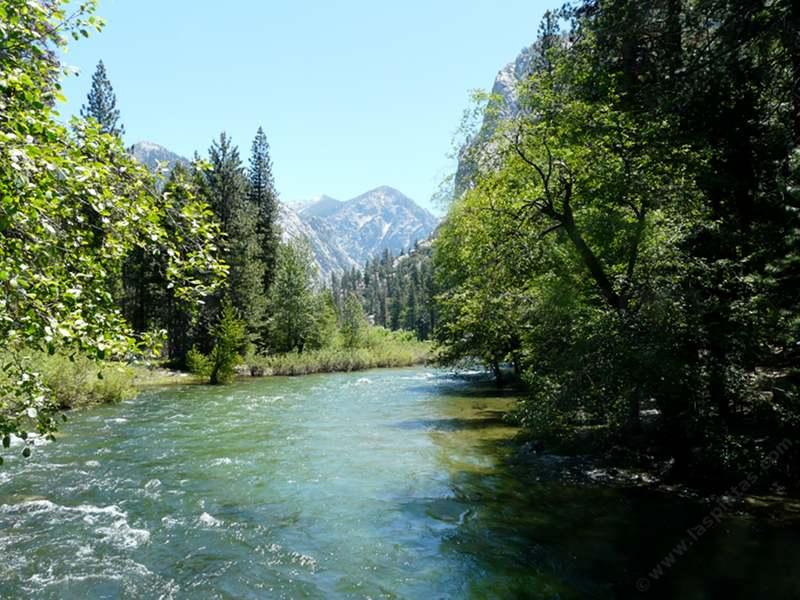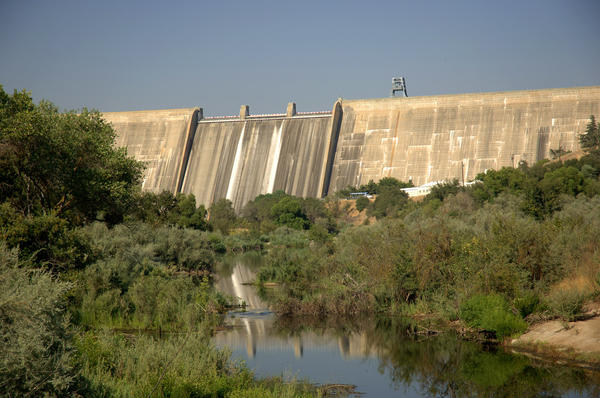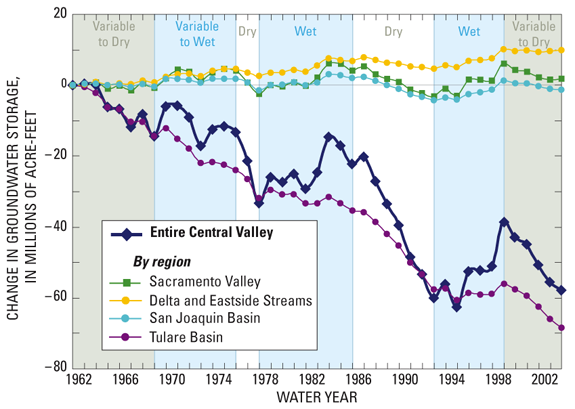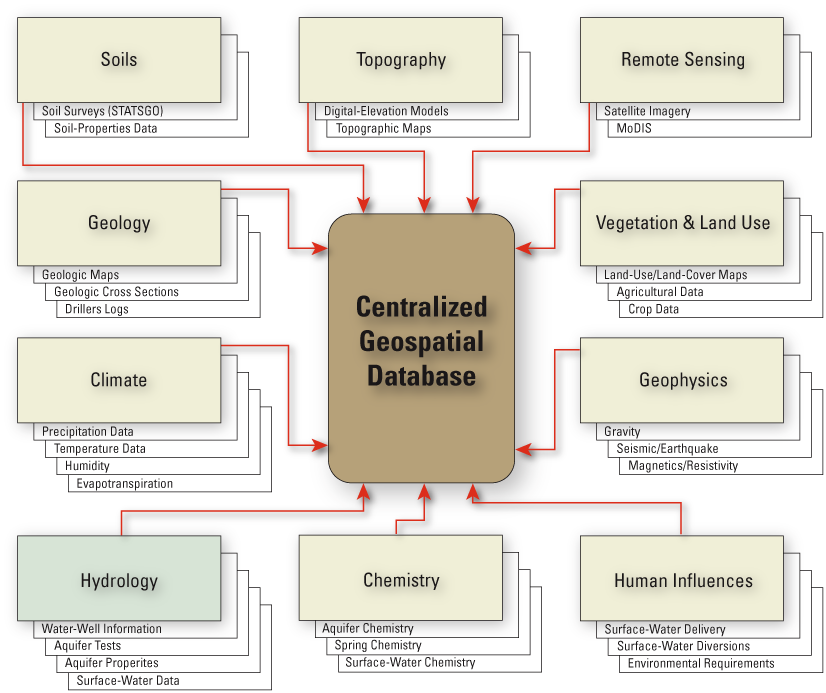Introduction
The
central valley covers 42,000 miles.
Approximately 6.5 million people live in this area in 18 different
counties. It takes about 8 hours to
drive from one end of the Central Valley to the other. Fresno is the largest city in the Central
Valley. The Sierra Nevada forms the
east. The Tehacapi mountain ranges form
the south. The coast ranges form the West. And the Cascades form the north. Precipitation winter. On a global and regional scale the Central Valley is extremely important. Six of the nations top 10 agriculturally productive counties are in the Central Valley. 1/4 of the nation's food is produced in the Central Valley
(CA central valley grasslands) http://www.whsrn.org/site-profile/grasslands
(lettuce field) http://www.freshexpress.com/YourSaladStory/our-growing-regions/huron.aspx
(Central Valley agriculture) http://www.library.ca.gov/crb/97/09/
http://alg.umbc.edu/usaq/archives/000277.html
Human Impacts
The
California gold rush brought tons of people to the Central Valley. Hundreds of thousands of people coming to the
Central Valley lead to many good and bad effects. Many Native Americans died due to diseases
brought over and immigrants were the target of many attacks as well. All these people in the Central Valley led to California becoming a state in 1850. The extremely fertile soil in the Valley made it a perfect place for farming. Now the Central Valley is known for
agriculture. So many people were inhabiting
the Central Valley, but there still was no real sustainable water source there. This led to the The Central Valley project. The building of dams, reservoirs, powerplants, canals, conduits, and
tunnels provide over 7 million acre feet of water. The building of dams and agriculture have altered all habitats in the Central Valley. Over 66% of the vernal pools have been destroyed and 1% of the original riparian woodlands are considered intact (CA valley grasslands).
http://www.laspilitas.com/nature-of-california/communities/riparian-rivers-and-creeks
(riparian woodlands)
http://www.laspilitas.com/nature-of-california/communities/riparian-rivers-and-creeks
http://www.kpbs.org/news/2013/jan/23/californias-gold-rush-days-live-temecula-valley-mu/
(CA central valley project)
http://cindyhooper.blogspot.com/2010_12_01_archive.html
(friant dam, and reservoir)
(http://kvpr.org/post/central-valley-project-reservoirs-lowest-2009)
Human Benefits
The CA Central Valley produces 8% of the
agriculture for the United States. It is the primary area for growing different
nuts and fruits that are consumed in the US. The almonds grown in the Central Valley
make up the majority supply for the entire world. The Central Valley is also a
major water resource for the state of California. Vernal pools benefit humans by controlling flooding and regulating water supply.
http://www.davidsanger.com/stockimages/8-188-1.almonds
Protected Areas
Multiple vernal pool sites in the Central Valley are protected. In addition, wetlands where endangered species such as the wintering waterfowl and the giant
garter snake are found have been recently protected.
(vernal pools) http://www.placerlandtrust.org/vernalpoolreport.aspx
Conservation Status
The vernal pool sites, for example Vina Plains
Preserve, have a relatively good conservation status because they are of the
last vernal pools in California, and thus they are being carefully preserved.
Before implementation of protective measures, human impact (agriculture, development, etc.) destroyed more
than 99 percent of native species in California's Central Valley grasslands. While action has been taken to
protect certain lands and important natural factors, these areas have already been harmed significantly.
However, the Nature Conservancy and the government have implemented the following sites in which no
further degradation can be caused by humans:
Pixley Vernal Pools Preserve
Pixley National Wildlife Refuge
Desert Tortoise Reserve
Tule Elk State Reserve
Windwolves Preserve
An estimated 11,310 km2 (2.8 million acres) of vernal pools have been destroyed, over 66 percent, with the most intact pools left on the higher terraces (CA central Valley grasslands)
http://www.eoearth.org/view/article/150849/
Looking to the Future
According to a combination of theoretical principles and empirical studies, a changing climate will allow invasive
species to more easily replace whatever small number of natives still exist in the Central Valley. However, these findings
aren't based on enough research to claim certainty. Scientists do not know enough about the future of climate change
itself to make such conclusions, but easier access for invasive species is definitely plausible.the future of California's
grasslands is really largely unknown.
Balancing the Ecosystem
Certified protection is the best way to maintain balance between people and the ecosystem. With such high rates of
degradation from agriculture and urbanization in the valley, only protecting specific locations could preserve certain
endemic species and at least some of whatever native species are left. Other actions can be in the form of policymaking.
Interest groups and passionate individuals can lobby congress of members of state and local governments to influence
policymakers to have more consideration for a healthy balance between humans and this ecosystem; one that could
produce sustainability instead of eventual absolute destruction.
http://geotripper.blogspot.com/2011/04/another-view-of-spring-in-california.html
(http://www.sfgate.com/bayarea/article/Dam-shame-It-s-time-that-San-Francisco-let-go-2738343.php) pre dam
The Central Valley used to be a huge gulf. However the decayed
rock materials from the mountains dumped into the gulf. This caused the
gulf to fill with earth materials, now the San Francisco Bay is the only part
of the gulf leftover. This land was inhabited by Native Americans,
spaniards, and then in 1840 United States citizen's began moving to California.
Then came the Gold Rush, bringing tons of people to the Central Valley,
leading to California becoming a state in 1850 (CA history video).
The soil that was created is very fertile, which is part of the reason
why the Central Valley is known for agriculture. The north part of the
Valley contained lots of water thanks to the mountains, however the south was
extremely dry. The farmers were forced to come up with an irrigation
system which led to land not being wasted. In order to conserve water the
Central Valley project was created and started in 1930. The
building of dams, reservoirs, and other things let to the conservation of
water. This water supply combined with the fertile soil have led to the
Central Valley becoming a rich source of food for the whole nation.
Current Human Impacts
The Central Valley of California used to be comprised of a proliferation of wetlands, woodlands, fresh water marshes, and vernal pools, all existing throughout extensive areas of grasslands. For the last century or so, humans have been exploiting its land, water, animals, and mineral resources. Human impact has destroyed most of these locations, and native flora in the valley now exist as less than 1 percent of the standing crop. The primary human impact on these lands is agriculture. Today, the valley's eight counties produce about half of our nation's fruits and vegetables. Because they are simply more cost-efficient, unsustainable practices have dominated this industry in the Central Valley. Monoculture, excessive use of pesticides and herbicides, unsafe irrigation techniques, overuse of water, more than necessary tillage, and other methods allow farmers to produce the largest yields and thus the largest profits. However, such procedures dry out the land's formerly rich soil, contaminate nearby water supplies and organisms living within them, and ultimately make the future of agriculture in the valley less plausible. Some effects have already been seen today. So much selenium has built up on the west side of the valley as a result of careless irrigation draining that the land is now completely unsuitable for agriculture. Humans have also utilized fresh water sources existing in the area, such as Tulare lake, which is now almost obsolete, and the San Joaquin River, which was dammed in the 1940s for irrigation, but has ever since then been an interference with migratory patterns of salmon on the west side of the U.S. According to the World Health Organization's latest report, five of the ten worst American cities with regards to air pollution are located in California's Central Valley. Pollutants emitted by agriculture, industry, and the 3.5 million residents living in the region are "trapped" by an issue of geography. Because the valley is surrounded on three sides by mountain ranges, an inversion layer of warm air prevents pollution from reaching high elevations, creating an absurdly concentrated layer of pollution right over the heads of civilians.
The Central Valley of California used to be comprised of a proliferation of wetlands, woodlands, fresh water marshes, and vernal pools, all existing throughout extensive areas of grasslands. For the last century or so, humans have been exploiting its land, water, animals, and mineral resources. Human impact has destroyed most of these locations, and native flora in the valley now exist as less than 1 percent of the standing crop. The primary human impact on these lands is agriculture. Today, the valley's eight counties produce about half of our nation's fruits and vegetables. Because they are simply more cost-efficient, unsustainable practices have dominated this industry in the Central Valley. Monoculture, excessive use of pesticides and herbicides, unsafe irrigation techniques, overuse of water, more than necessary tillage, and other methods allow farmers to produce the largest yields and thus the largest profits. However, such procedures dry out the land's formerly rich soil, contaminate nearby water supplies and organisms living within them, and ultimately make the future of agriculture in the valley less plausible. Some effects have already been seen today. So much selenium has built up on the west side of the valley as a result of careless irrigation draining that the land is now completely unsuitable for agriculture. Humans have also utilized fresh water sources existing in the area, such as Tulare lake, which is now almost obsolete, and the San Joaquin River, which was dammed in the 1940s for irrigation, but has ever since then been an interference with migratory patterns of salmon on the west side of the U.S. According to the World Health Organization's latest report, five of the ten worst American cities with regards to air pollution are located in California's Central Valley. Pollutants emitted by agriculture, industry, and the 3.5 million residents living in the region are "trapped" by an issue of geography. Because the valley is surrounded on three sides by mountain ranges, an inversion layer of warm air prevents pollution from reaching high elevations, creating an absurdly concentrated layer of pollution right over the heads of civilians.
Future Prospects
According to a combination of theoretical principles and empirical studies, a changing climate will allow invasive species to more easily replace whatever small number of natives still exist in the Central Valley. However, these findings aren't based on enough research to claim certainty. Scientists do not know enough about the future of climate change itself to make such conclusions, but easier access for invasive species is definitely plausible. Invasions from new species could contribute to the unsuitability of lands that could have once been cultivated. The unsustainable practices used currently also affect unused lands with contaminated irrigation, which again add weight the possibility of a decline in available, suitable farmland. While democrats in California push for more sustainable, ecologically-friendly practices, profit motives continue to drive away the richness of the area. Also, with pollution collecting as a result o the valley's inversion layer, the area is becoming a less desirable place to live every year. Because of humans, the Central Valley may experience a drastic shift in population and land quality.
Ways to Improve the Ecosystem
The most important part of the Central Valley is its agriculture. The agriculture of the Central Valley would not be as profficient when the entire water supply becomes depleted. The most important thing that humans can do for this ecosystem is to keep the water supply high. Although agriculture can deplete water supply, humans tend to waste a great amount of water. Regulations need to be put in so that little to no water is wasted. The air quality in the Central Valley is horrible. With the 3.5 million people living there, the many industries and agricultures, and all the driving that is done it is a center of pollution (berg). Although the pollution is going down, it is extremely high still and better regulations need to be put in place to help the pollution. As the Central Valley grows they have to build houses in order to house all the people. More houses are being built on potential farming areas instead of urban areas. The houses built here are taking up agriculture space. The Central Valley needs to focus on building houses in Urban areas, preserving their agricultural space.
The Central Valley hydrologic model is being worked on right now. The goal of this study is to understand water competition. This study will help the Central valley with conservation of agricultural land, conserving water, understanding effects of climate change, and the change in land use. (USGS)
(water levels dropping)
(hydrology)
http://pubs.usgs.gov/fs/2009/3057/
http://fishbio.com/fisheries-news/regional-fisheries-news/central-valleys-ecological-state-studied
http://switchboard.nrdc.org/blogs/aeaken/new_report_looks_at_the_future.html
http://www.library.ca.gov/crb/97/09/
http://www.3dnworld.com/galapp.php/links.php?user=hhodges&app=prnmat
http://lib.stanford.edu/GIS/projects
Certified protection is the best way to maintain balance between people and the ecosystem. With such high rates of degradation from agriculture in the valley, protecting specific locations could preserve certain endemic species and at least some of whatever native species are left. Other actions can be in the form of policymaking. Interest groups and passionate individuals can lobby congress of members of state and local governments to influence policymakers to have more consideration for a healthy balance between humans and this ecosystem; one that could produce sustainability instead of eventual absolute destruction. For example, limitations on the use certain pesticides should be placed on companies who in the past have been responsible for contaminated runoff and other problems. The more adverse the company or farmer's record is with regards to environmental health, the more restrictive such limitations should be. This gives agricultural actors who are most liable for current degradation an incentive to develop growing methods without the use of environmentally harmful additives.
Sources Used
Austin, Nan. "FISHBIO: Fisheries Research, Monitoring, and Conservation › Central Valley’s Ecological State Studied." FISHBIO Fisheries Research Monitoring and Conservation. N.p., 12 July 2012. Web. 19 Nov. 2013.
California History Video - Life in the Central Valley of California, 1949 - "CharlieDeanArchives." YouTube. YouTube, 11 Jan. 2013. Web. 19 Nov. 2013
http://www.youtube.com/watch?v=5NIHSKkya28
"California Central Valley Grasslands." California Central Valley Grasslands. N.p., n.d. Web. 19 Nov. 2013.
"Description of the Valley." ValleyHistory.org / -. Fresno Historical Society, n.d. Web. 19 Nov. 201 http://www.valleyhistory.org/index.php?c=74
Fund, W. (2013). California Central Valley grasslands. http://www.eoearth.org/view/article/150849
Purdum, Todd S. (2000-09-06). "California's Central Valley. Where the Mountains Are Almonds". New York Times.
"Sacramento-San Joaquin River System, California". American Rivers. America's Most Endangered Rivers Report: 2009 Edition.
Austin, Nan. "FISHBIO: Fisheries Research, Monitoring, and Conservation › Central Valley’s Ecological State Studied." FISHBIO Fisheries Research Monitoring and Conservation. N.p., 12 July 2012. Web. 19 Nov. 2013.
Berg, Nate. "Why Does California's Central Valley Have Such Bad Air Pollution?" - Nate Berg. N.p., n.d. Web. 19 Nov. 2013.
California History Video - Life in the Central Valley of California, 1949 - "CharlieDeanArchives." YouTube. YouTube, 11 Jan. 2013. Web. 19 Nov. 2013
http://www.youtube.com/watch?v=5NIHSKkya28
"California Central Valley Grasslands." California Central Valley Grasslands. N.p., n.d. Web. 19 Nov. 2013.
"Description of the Valley." ValleyHistory.org / -. Fresno Historical Society, n.d. Web. 19 Nov. 201 http://www.valleyhistory.org/index.php?c=74
Fund, W. (2013). California Central Valley grasslands. http://www.eoearth.org/view/article/150849
Purdum, Todd S. (2000-09-06). "California's Central Valley. Where the Mountains Are Almonds". New York Times.
"Sacramento-San Joaquin River System, California". American Rivers. America's Most Endangered Rivers Report: 2009 Edition.
USGS
Fact Sheet 2009-3057: California's Central Valley Groundwater Study: A
Powerful New Tool to Assess Water Resources in California's Central
Valley."USGS
Fact Sheet 2009-3057: California's Central Valley Groundwater Study: A
Powerful New Tool to Assess Water Resources in California's Central
Valley. USGS, n.d. Web. 19 Nov. 2013.
























